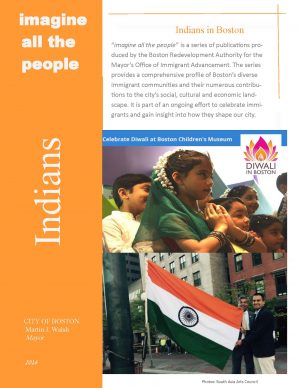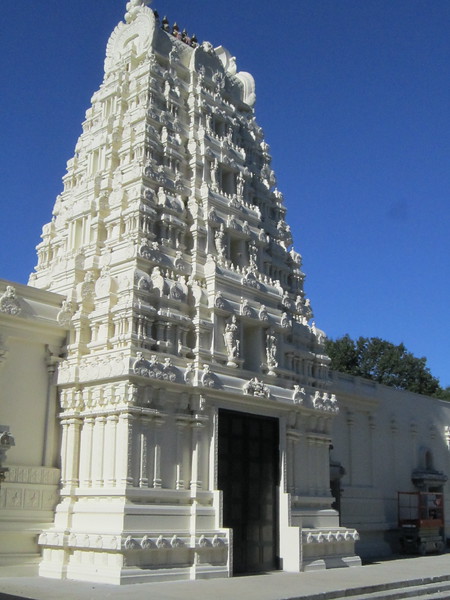Indian Americans in Lexington celebrate the Hindu festival of Diwali in 2011. Courtesy of the Boston Globe.
Although the first wave of South Asian migration to the United States began in the late 19th and early 20th centuries, South Asians did not arrive in significant numbers in the Boston area until the second half of the 20th century. Instead of a quota system that limited immigration from particular countries, the Immigration Act of 1965 allowed higher numbers of educated immigrants to enter the United States. During this second wave of migration from 1965-1980, most of the South Asians who moved to the Boston area were middle-class Indians and Pakistanis. Many of these Indian immigrants were highly educated in medicine, engineering, and other scientific fields; since Indian independence in 1947, several Boston-area research institutions, including Harvard University and the Massachusetts Institute of Technology, formed close relationships with Indian research institutions and provided education and employment to immigrants during the second wave.
The third wave of South Asian immigration, from the 1980s to today, includes higher numbers of migrants from Bangladesh, Nepal, and Sri Lanka. Some of these immigrants were motivated to leave their home countries in the 1990s due to limited economic opportunities, but many were refugees fleeing violence and political instability. For example, the ethnic violence in Sri Lanka in the 1980s and 1990s sparked migration to the United States; according to the U.S. Census of 2000, Massachusetts is home to the third-highest number of foreign-born Sri Lankans, after California and New York.
Settlement
When significant numbers of South Asians first settled in Massachusetts between 1965-1980, the majority lived in the Boston area because of its proximity to jobs in the medical and technology fields. As these immigrants prospered and had American-born children, they formed ethnic enclaves in suburban towns in the Metrowest area. Since 1980, third-wave Indian immigrants continue to arrive and settle in towns like Framingham and Ashland. Today, there are sizable Indian communities in both Burlington and Quincy.
Although the most recent Pakistani immigrants are more spread out across the greater Boston area, many Pakistanis are similarly highly educated and live and work near universities in Cambridge and Boston. Many from Bangladesh, Sri Lanka, and Nepal tend to live in lower income neighborhoods and towns in the Boston area.
Today, the highest concentrations of foreign-born Indian residents of Boston tend to live in neighborhoods near medical centers and universities, such as the West End near Massachusetts General Hospital and MIT, and Harbor Point in Dorchester, adjacent to the University of Massachusetts Boston. There are also smaller concentrations in parts of Allston, Back Bay, Fenway, the South End, and Mission Hill.
Work
From 1965-1980, Indian and Pakistani newcomers to greater Boston were mostly middle-class and highly educated in medicine, engineering, and other scientific fields. Many of these immigrants worked as doctors, professors, or researchers at Boston-area hospitals and universities. Since the 1980s, Indian and Pakistani immigrants in the region have continued to expand their presence in these occupations, as well as the newer fields of biotech and software development. With the establishment of the H-1B visa program in the 1990s, local technology companies recruited a large crop of Indian computer programmers and engineers, some of whom settled in the region permanently.
The most recent wave of South Asian migration also includes refugees and working-class migrants from counties like Bangladesh, Nepal, and Sri Lanka. With often lower levels of education, these newcomers have been more likely to work less-skilled jobs in the service industry. Many South Asians in the Boston area have also become entrepreneurs and small business owners, particularly in the restaurant and technology industries.
–Kelly Lyons




